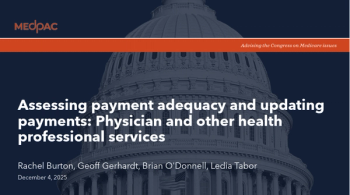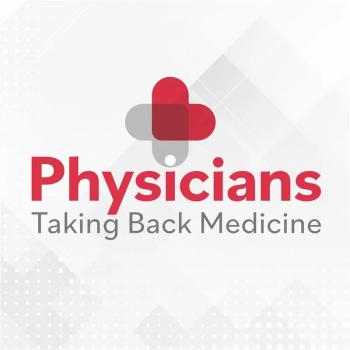
The patient safety side of improving patient access
Access isn’t just a question of overcoming the hurdle of being seen by a provider, but being seen by someone with the level of expertise required for the best clinical outcome.
Editor's Note: Welcome to Medical Economics' blog section which features contributions from members of the medical community. These blogs are an opportunity for bloggers to engage with readers about a topic that is top of mind, whether it is practice management, experiences with patients, the industry, medicine in general, or healthcare reform. The opinions expressed here are that of the authors and not UBM / Medical Economics.
When we least expect it, issues of patient access touch us all, as the need for clinical evaluation suddenly becomes more pressing. All of us have experienced, as both patients and providers, the challenges of finding a timely appointment-a frequent occurrence that spares no one and can range from being a nuisance to causing a potentially dangerous delay in care.
This is made all the more frustrating knowing that unused appointment capacity exists, even at leading healthcare delivery organizations. This “patient access paradox”-long wait times despite underutilized capacity-is a multifactorial inefficiency: overly complex scheduling templates, variation in scheduling rules, manual and inconsistent patient triaging, and cultural barriers to utilization of different provider types and service lines all contribute to this supply-demand misalignment.
Access isn’t just a question of overcoming the hurdle of being seen by a provider though, but rather being seen by someone with the level of expertise required for the best clinical outcome. There are significant patient safety risks in failing to bridge the gaps in understanding where this expertise exists. Delays in care resulting from misdirected referrals is an all too common occurrence, as misappropriation of specialty resources exacerbates capacity issues and hinders patient access.
When there are barriers to accessing the requisite expertise, a delay in diagnosis often follows-a delay we know to impact malpractice risk, representing a significant portion of referral-related ambulatory malpractice cases. The majority of missed diagnosed malpractice cases are in the ambulatory care setting, and fall most heavily on primary care providers. For example, failure and/or delays in obtaining a referral or consult represent 46 percent of clinical judgement errors that result in referral-related malpractice claims, per a recent Institute for Healthcare Improvement (IHI) report. IHI’s recommended approach outlines concrete steps to operationalize the referral process, but we need to determine specific ways of pinpointing where expertise exists within our health systems and facilitate appropriate utilization of that expertise if we are to move the needle on patient access as a safety issue.
Access improvement initiatives must extend beyond addressing timeliness of care. These initiatives should also encompass access to information and expertise between and among care teams with the ability to disseminate and effectively communicate that information, both to providers and patients. Everyone is well-intentioned, but there is a general lack of awareness about the cacophony that cumbersome referral processes and scheduling hoops inadvertently create, and those willing to battle the entropy tend to be seen as subversively circumnavigating the system.
Somehow, the workflows we’ve developed all too often support the chaos rather than facilitate clarity. We need to acknowledge that, when it comes to issues of access, it is far more than a nuisance to have to wait. Just as delays from issues in scheduling processes are an important barrier to achieving timeliness in access to care, so too are the communication obstacles. Failure to communicate between providers constitutes 43 percent of communication-based referral-related malpractice claims, and failure to communicate the necessary information to patients represents another 43 percent, per IHI.
Closing the communication gaps requires not only improving communication processes, but also providing insight into whom we are meant to be communicating with about our patients. As the IHI piece points out, “Bridging the gaps in the referral process is only possible with the concerted, coordinated efforts of all stakeholders, with all constituents accepting accountability for their respective roles.”
Creating collaborative care agreements to articulate care team expectations is one such IHI proposal to operationalize the needed social contractual obligations between primary care providers, specialists, and patients. However, there is an unarticulated assumption that all parties are already cognizant of whom they are entering into these arrangements with. The success of referral management, and indeed patient access initiatives as a whole, is incumbent upon a better understanding of the community of providers participating in the care of our patient populations.
As our provider networks expand, often exponentially and rapidly, understanding who else is involved in a patient’s care becomes even more challenging. Surfacing better provider data to both providers and patients is a critical step as we can begin to confront access and referral management issues more meaningfully and effectively. Currently, we typically lack even a basic understanding of our peers with whom we share patient care responsibility. All too often, we do not even know the numbers and addresses of other providers involved in a patient’s care journey with whom we should coordinate, let alone how to identify other potential sources of specialized expertise to drive the best possible outcomes for our patients. In the absence of comprehensive and current provider data, we remain at a constant disadvantage for unlocking access, let alone facilitating access to the right providers for a given patient.
Instead, as we consider patient access, we need to become increasingly nuanced in our understanding of the spirit behind the need. It does not begin and end with an appointment. An appointment is merely the construct in which clinical information is obtained and exchanged.
We need to recognize that timeliness is but the initial step in an opportunity for the application of expertise-being seen (eventually) is almost a basic assumption, but being seen by those best-positioned to medically adjudicate is the true opportunity we must grab to improve patient safety and clinical outcomes. Enhancing and effectively managing the information we display to other providers and requesting that the health systems we work with provide better access to information about the providers within their networks are key steps in paving the way for better patient access and more effective care coordination.
Erin Jospe, MD, is chief medical officer for Kyruus, a company that provides enterprise solutions for health systems to optimize the patient experience across all channels of patient access.
Newsletter
Stay informed and empowered with Medical Economics enewsletter, delivering expert insights, financial strategies, practice management tips and technology trends — tailored for today’s physicians.
















